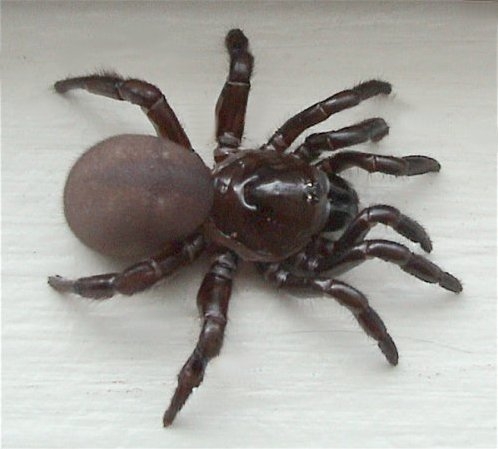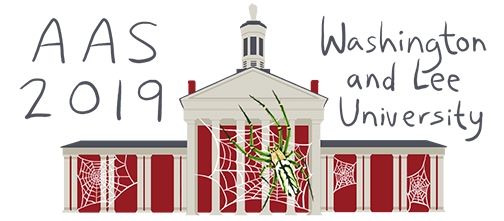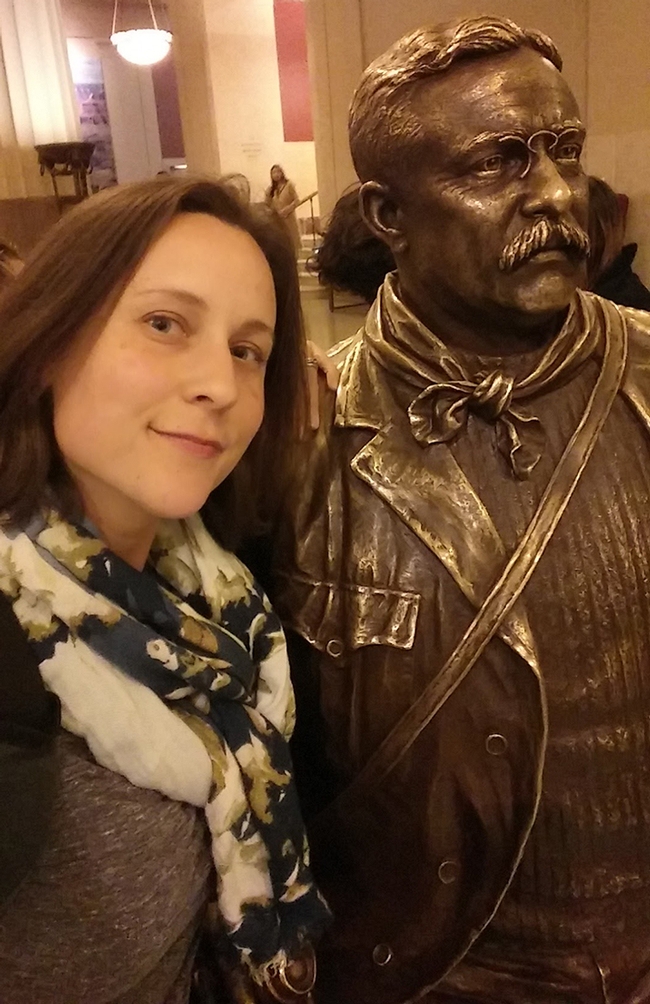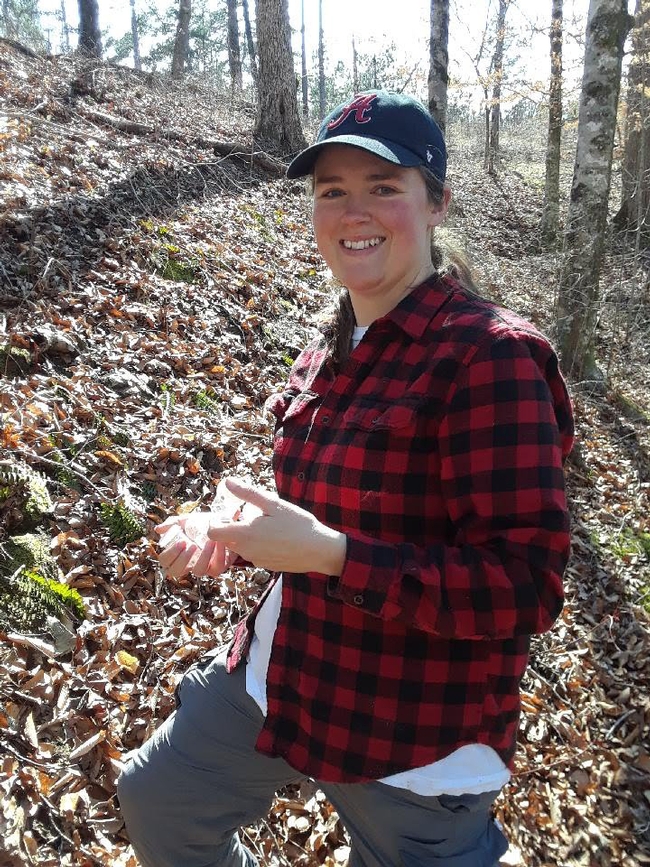
Two doctoral students from the Jason Bond laboratory, UC Davis Department of Entomology and Nematology, won first- and second-place awards in the student research competitions at the recent meeting of the American Arachnological Society, held at Washington and Lee University, Lexington, Va.
Rebecca Godwin won first in the poster competition for her research on trapdoor spiders and Lacie Newton won second for her oral presentation on species delimitation.
Congratulations to these dedicated doctoral students!
Godwin titled her work, “Revision of New World Ummidia (Mygalomorphae, Halonoproctidae)”: Her abstract: “Ummidia is a historically taxonomically difficult group of spiders belonging to the infraorder Mygalomorphae, one of the three main lineages recognized within spiders. Mygalomorph life history and their incredibly cryptic appearance make them difficult to identify, as a result they are frequently overlooked by spider systematists. Ummidia Thorell 1875 is a wide-ranging genus of trapdoor spider found both in the Mediterranean region of the Old World and in the New World from the eastern United States south to Brazil. Taxonomic work on New World Ummidia is sparse outside of original descriptions, the most recent of which are over half a century old."

Lacie titled her work, “Species Delimitation of the Antrodiaetus Unicolor Species Complex Using a 3RAD Approach.” Her abstract: “Although species delimitation can be highly contentious, the development of reliable methods to accurately ascertain species boundaries is a fundamental and necessary step in cataloguing and describing Earth's quickly disappearing biodiversity. Species delimitation in spider taxa has historically been based on morphological characters; however, certain mygalomorphs are morphologically indistinguishable from each other yet have considerable molecular divergence."
"Previous research by Hendrixson and Bond (2005) described a new sympatric species Antrodiaetus microunicolor in the A. unicolor species complex using morphological criteria (i.e. size and setal character differences) and behavioral criteria (non-overlapping mating seasons). Subsequently, they used two molecular markers COI and 28S and discovered that A. unicolor is paraphyletic with respect to A. microunicolor. To further delineate this species complex, we implement the cohesion species concept and employ multiple lines of evidence for testing genetic exchangeability and ecological interchangeability. Our integrative approach includes extensively sampling homologous loci across the genome using a version of RADseq called 3RAD, assessing population structure across their geographic range, and evaluating ecological similarity by niche-based distribution modeling. Based on our analyses, we conclude that this species complex has two or three species in addition to A. microunicolor.”

Godwin holds two degrees from Auburn University: her bachelor's degree in zoology in 2004, and her master's degree in wetland biology in 2011. She began her doctoral studies at Auburn University in 2014, and transferred to UC Davis when Bond accepted the UC Davis position in 2018.
Godwin won the Auburn University's Department of Biological Science's Outstanding Service Award in 2016. She is the lead author of research published in 2018 in the journal Molecular Phylogenetics and Evolution on “Phylogeny of a Cosmopolitan Family of Morphologically Conserved Trapdoor spiders (Mygalomorphae, Ctenizidae) Using Anchored Hybrid Enrichment, with a Description of the Family, Halonoproctidae Pocock 1901.” She currently serves as a graduate teaching assistant in the course, "Biology 2C," at UC Davis.
Godwin's research interests include taxonomy, systematics, and phylogreography of trapdoor spiders, as well as effective science communication and increasing general science literacy.

Newton received her bachelor of science degree from Millsaps College, Jackson, Miss., in 2016, and then joined the Auburn University doctoral program. Like Godwin, she transferred to UC Davis with her major professor in 2018. Newton served as an undergraduate teaching assistant at Millsaps College for “Introduction to Cell Biology” and “General Zoology,” and as a graduate teaching assistant in “Introduction to Biology” at Auburn University.
Newton now serves as a graduate teaching assistant at UC Davis for “Introduction to Biology: Biodiversity and the Tree of Life.” She won the 2019-2020 George H. Vansell Scholarship, UC Davis. Her research interests include systematics, species delimitation, and phylogeography of spiders; phylogenetics; comparative transcriptomics of troglophilic and troglobitic spiders; cave biology and conservation.
Both Godwin and Newton volunteer at the Bohart Museum of Entomology's programs on spiders and at the campuswide UC Davis Biodiversity Museum Day.
Bond joined the UC Davis faculty after a seven-year academic career at Auburn University, Ala. He served as professor of biology and chair of the Department of Biological Sciences from January 2016 to July 2018, and as curator of arachnids and myriapods (centipedes, millipedes, and related animals) at the Auburn University Museum of Natural History, from August 2011 to July 2018.